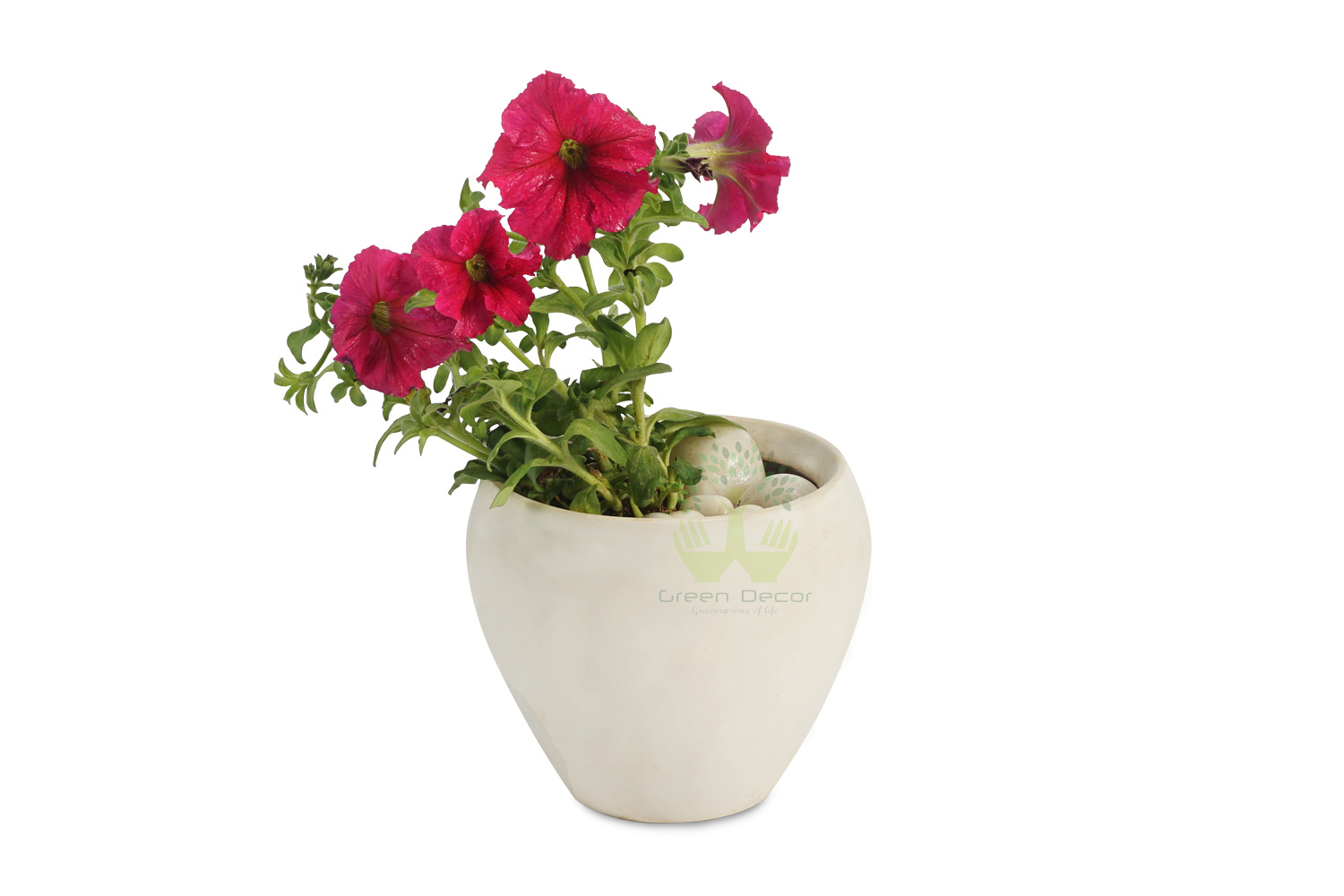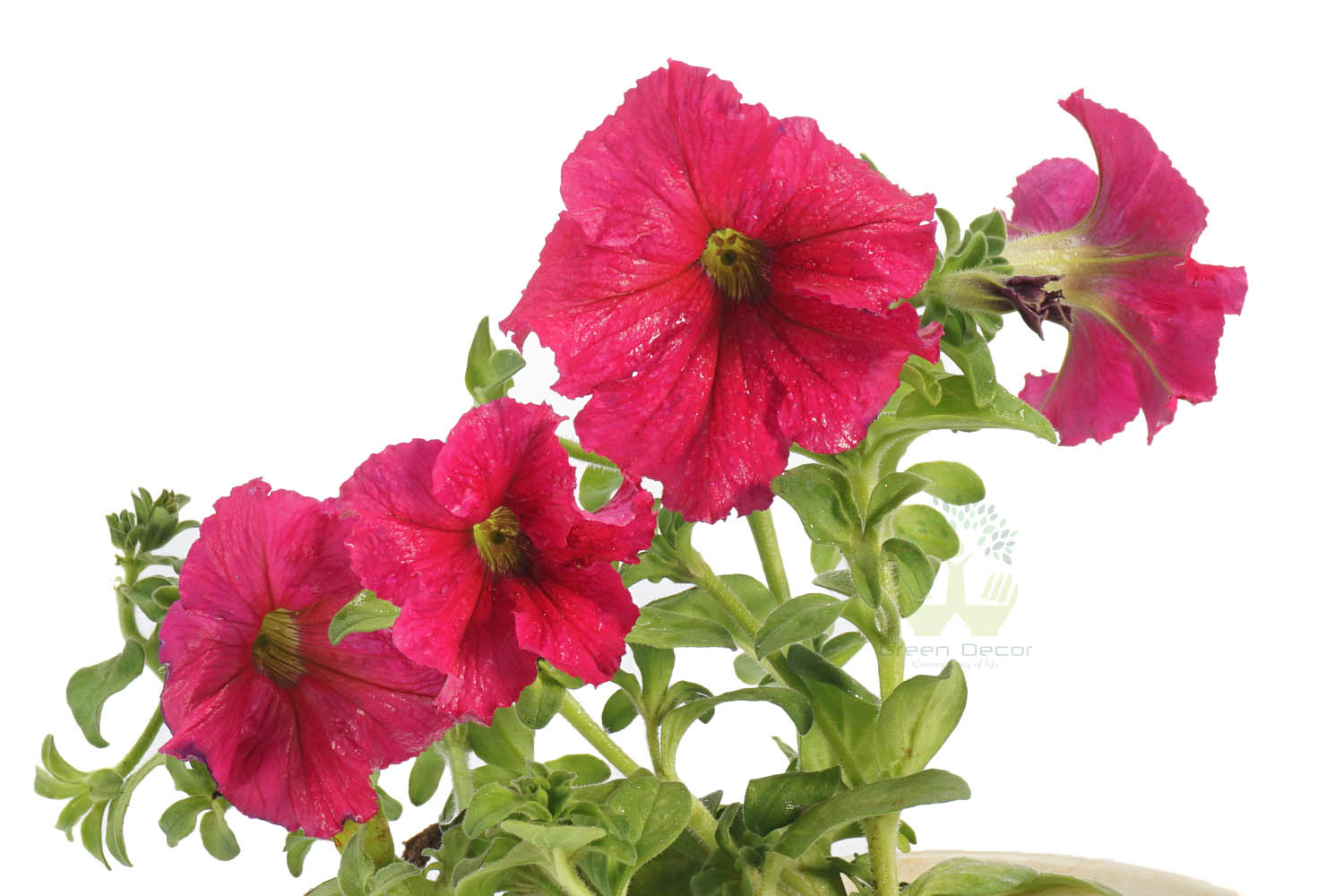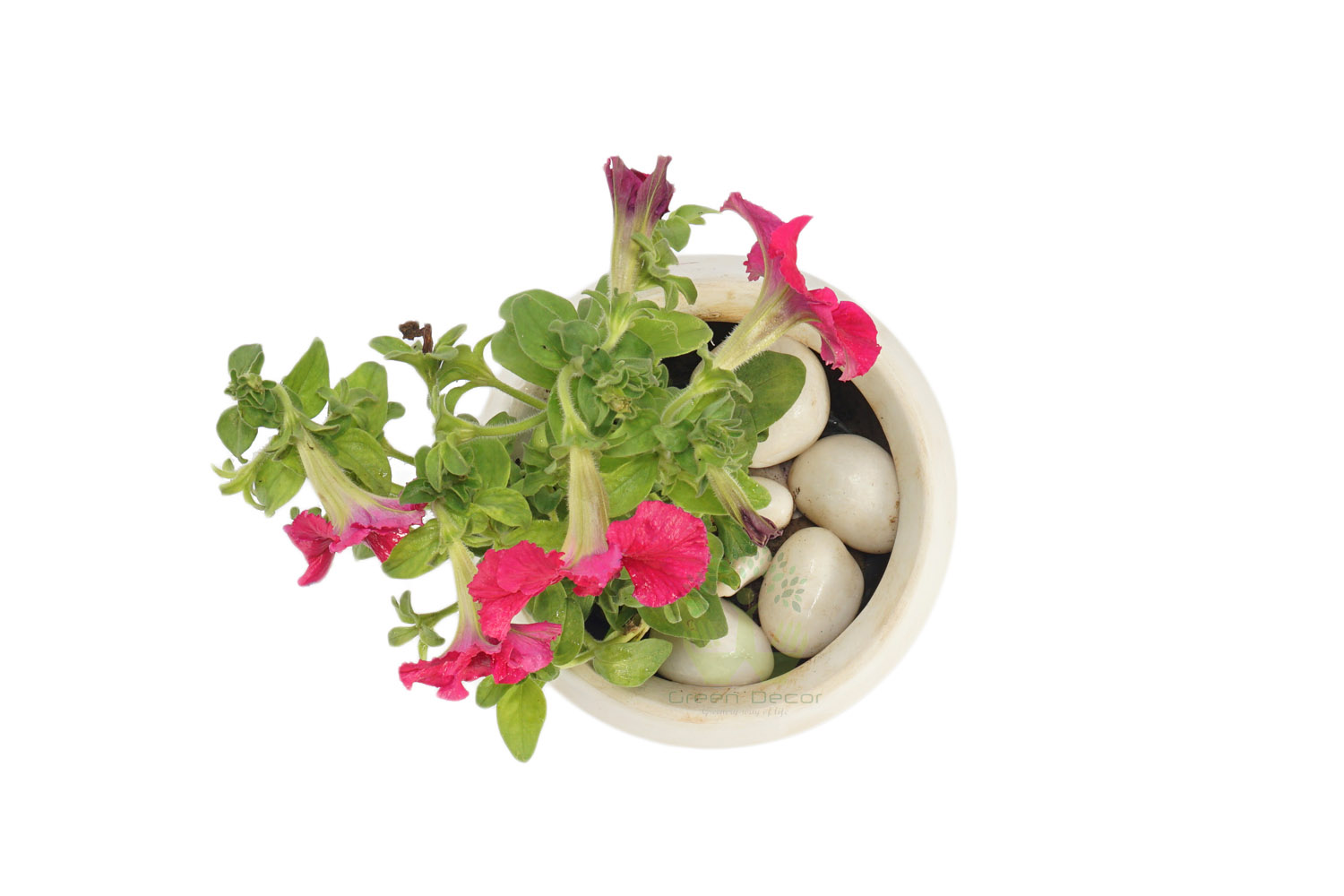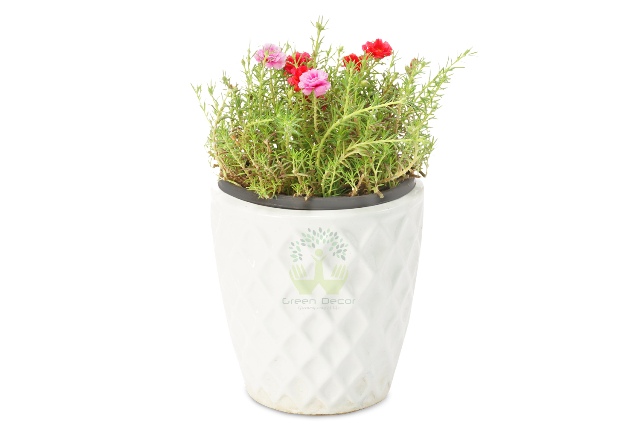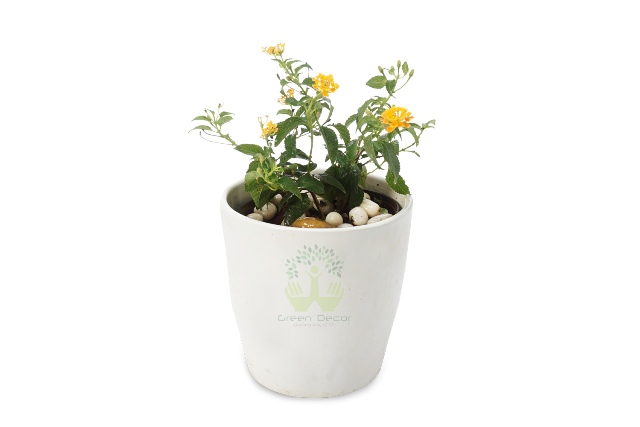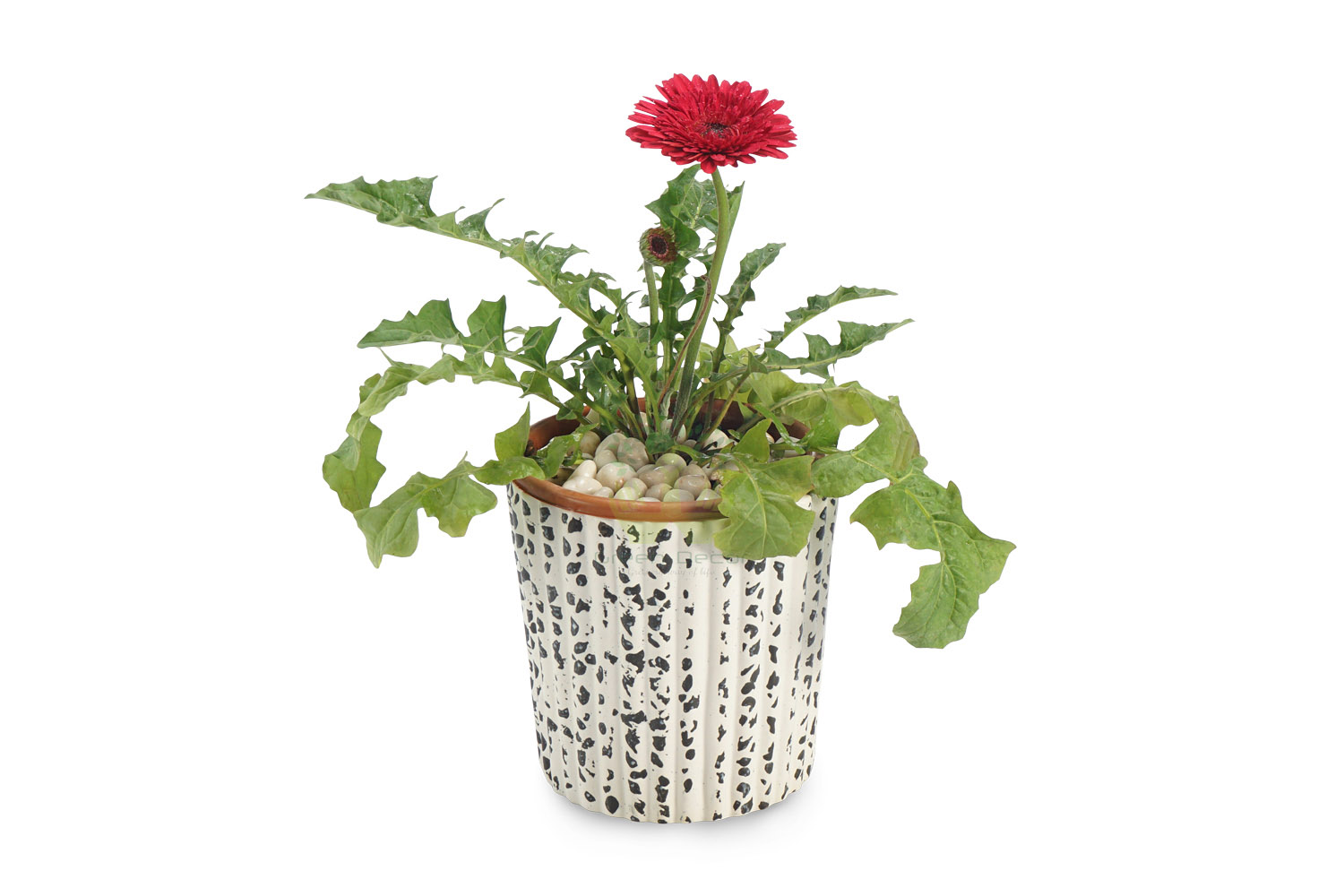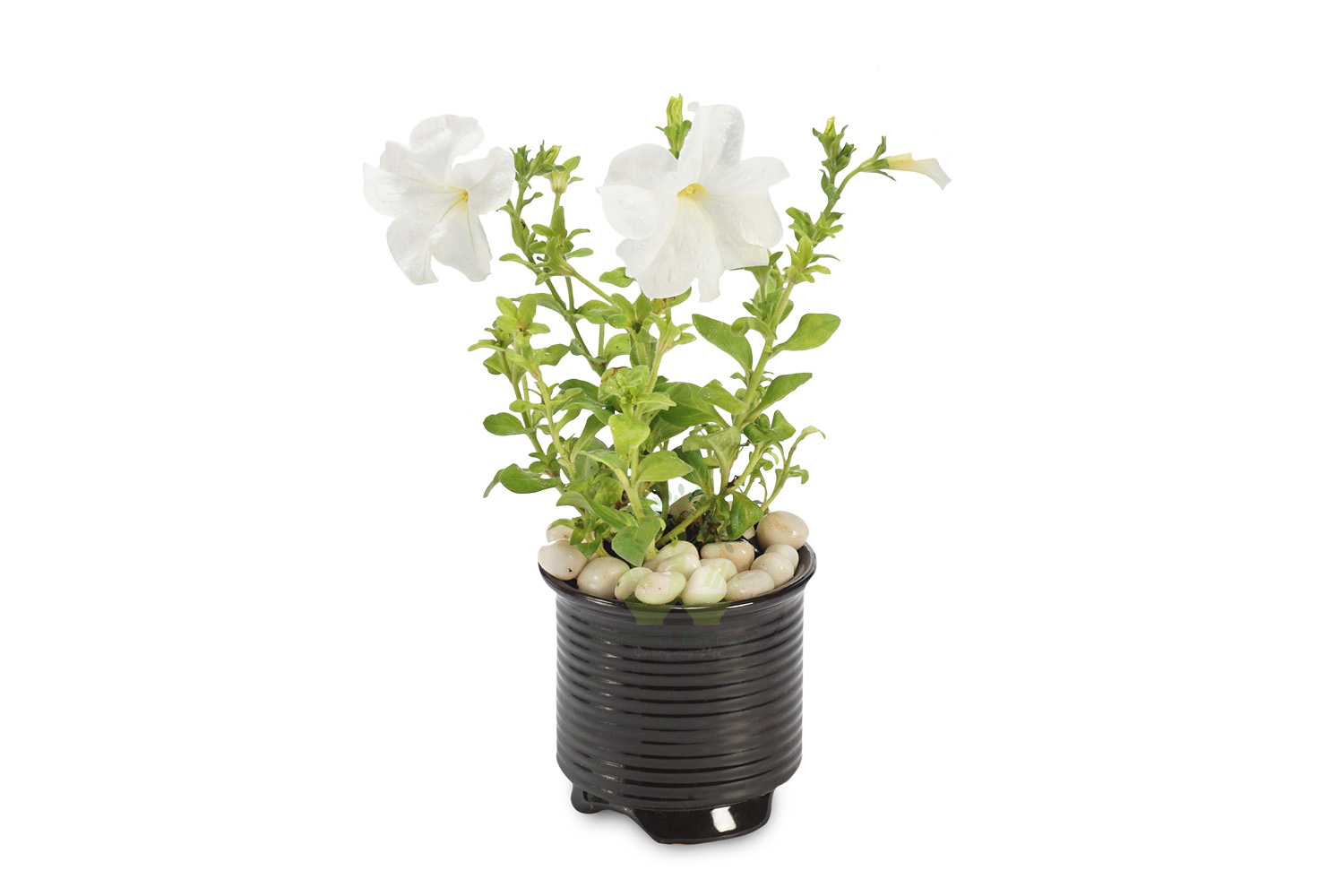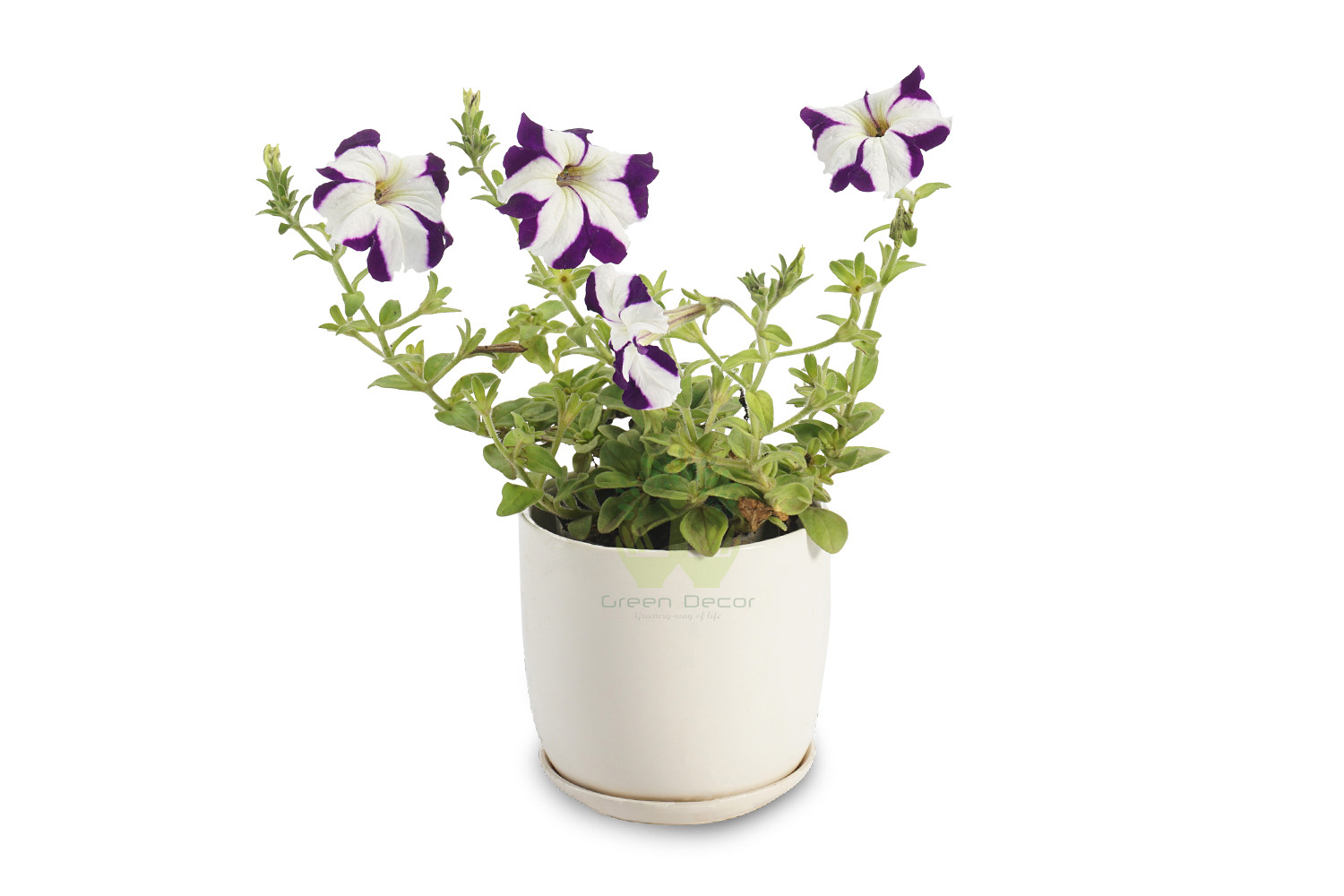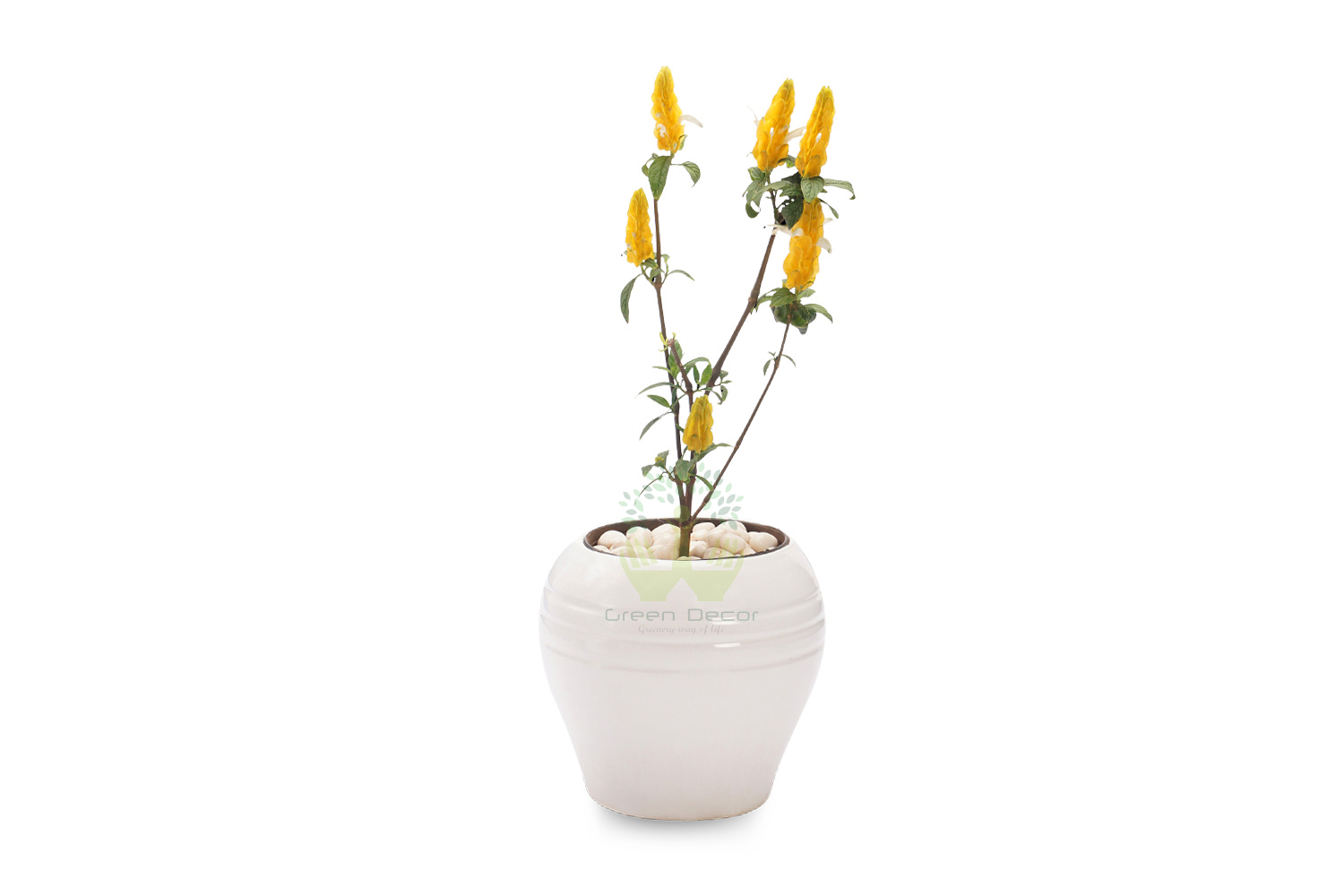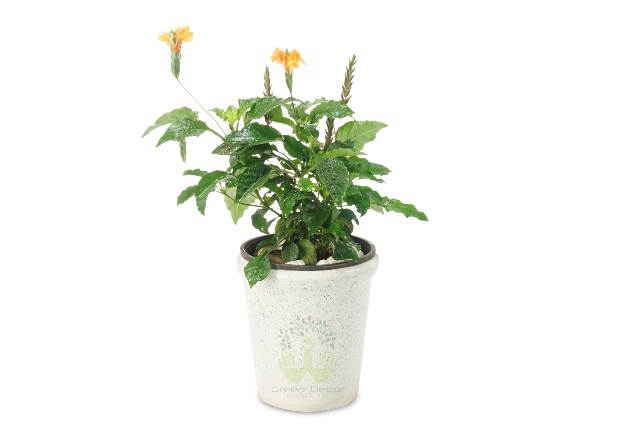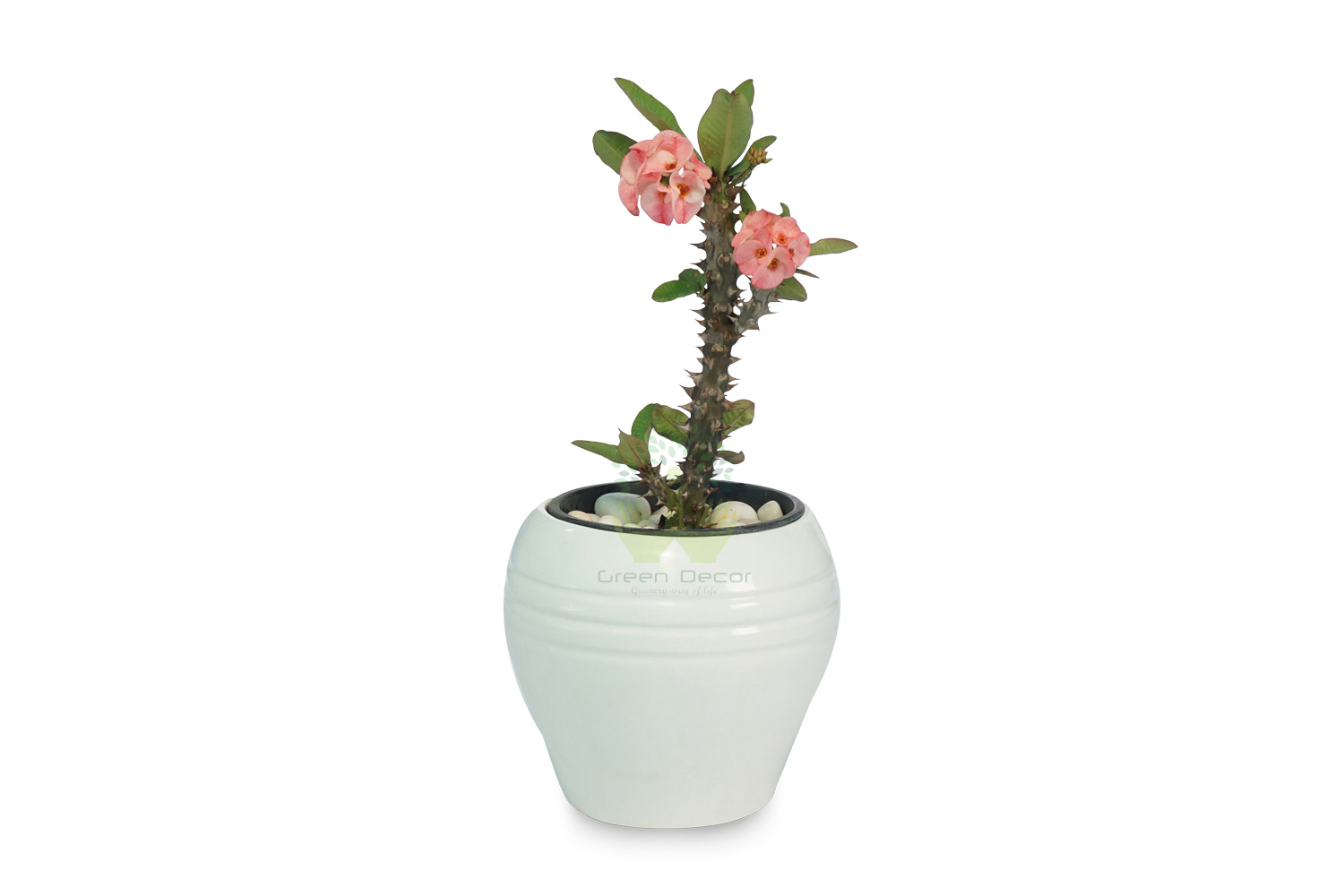Petunia - Pink
270
Maintenance Level
Low
Placements
Outdoor-Shades
Toxic
NO
Fragrance
Medium
Seasons
Winter
Plant Height
6" to 12"
Water Frequency
Winter
Alternate Day
Summer
Daily
Fertilizer Frequency
Winter
2-3 Month
Summer
1-2 Month
- About Petunia - ..
- How To Grow Petunia - ..
- Benefits of Petunia - ..
- Maintenance Tips
- Shipping Info
Petunia species are mostly annual herbs. The leaves are sessile (e.g., lacking leaf stem) and are usually oval-shaped with smooth margins; some feature fine sticky hairs. The flowers are funnel-shaped, consisting of five fused or partially fused petals and five green sepals. Most species are insect-pollinated.
Soil Need
Loamy Soil
Fertilizer (type)
All Purpose Fertilizer, Liquid Fertilizer
Growth Pattern
Fast
Pruning
2-3 Month
Re-Potting
Every 11-12 Month
Process :
1. Choose the right place to plant them. All types of petunias need at least five to six hours of full sunlight per day.
2. Prepare the soil for planting. Make sure to dig the soil so that it is nice and loose.
3. Give them the right amount of fertilizer monthly.
4. Water them properly. Most petunia types are fairly easy-going when it comes to water.
1. Treat Insomnia
2. Decorative Purposes
Do's
1. Petunias are tolerant of heat so you don’t have to water them regularly.
2. When they reach about six inches tall, pinch them back so that you encourage the rapid formation of their flowering side shoots.
Don'ts
1. Avoid pinching millifloras or "spreading" petunias.
2. Avoid petunia diseases.
